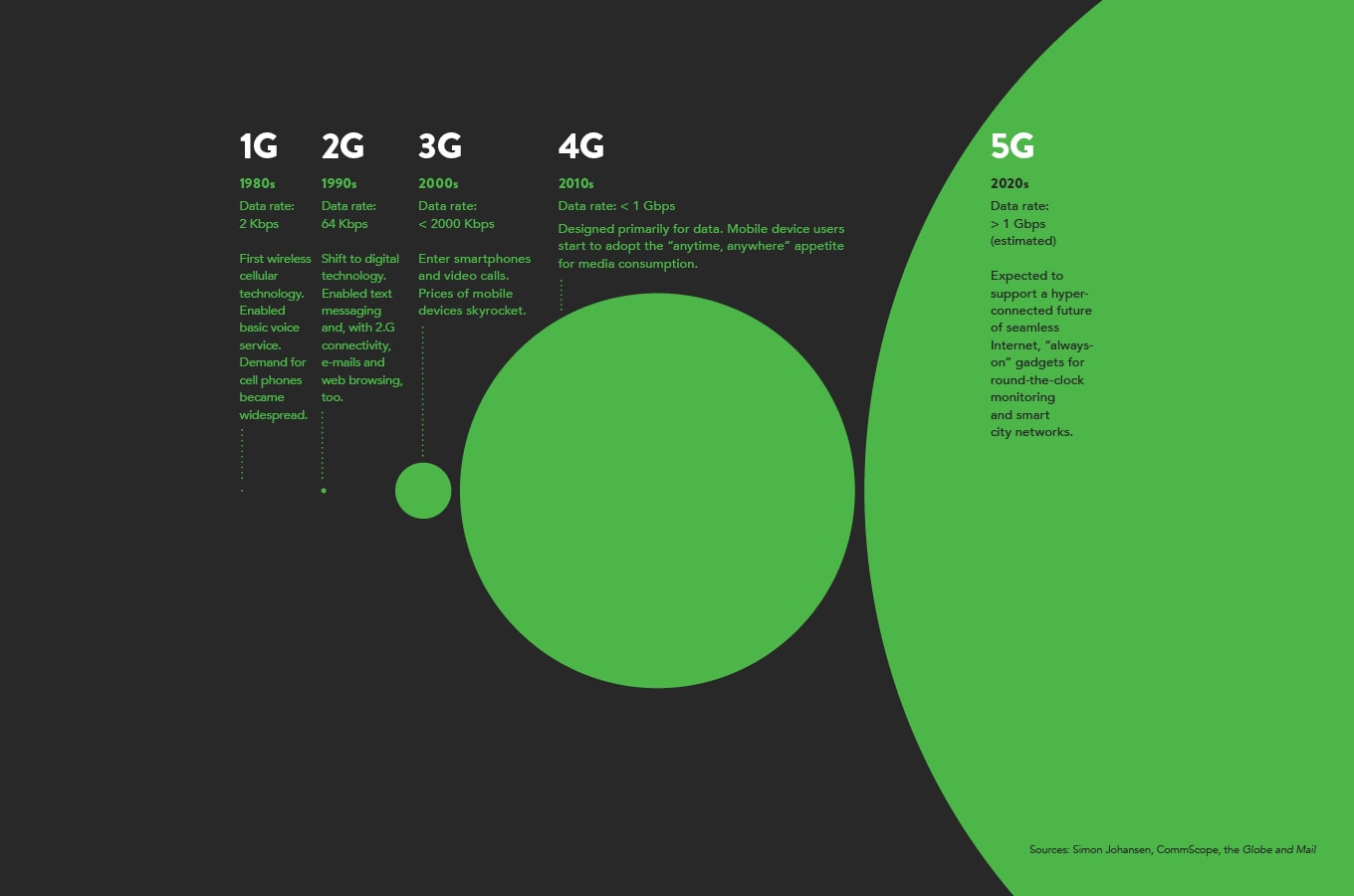APEX Insight: Every decade or so, a new generation of wireless network technology boosts speed and bandwidth to mobile devices. But 5G isn’t just a UX upgrade – it’s a quantum leap into the digital future.
Imagine a world where in-flight entertainment means high-definition, immersive virtual reality (VR) content or feature-rich multiplayer 3-D gaming. Where cabins are equipped with wireless temperature sensors and crew use augmented reality (AR) headsets to address passengers personally. And at airports, everything is accelerated – from luggage tracking to biometric passenger verification.
Well, you may not need to imagine much longer, because 5G is expected to facilitate all of this, and five major players – Airbus, Delta Air Lines, Sprint, OneWeb and Airtel – have come together, forming the Seamless Air Alliance, to make it a reality. “Clearly, 5G will be better than what 3G and 4G can offer the traveling public today,” Airbus spokesperson Martin Fendt says. “More passengers will be able to simultaneously stream more high-bandwidth content than before. Furthermore, this experience will become seamless between home, taxi, airport terminal and the aircraft cabin.”

Although 5G specification isn’t yet fully defined, Fendt says, expected benefits include one- to 10-Gbps connections, 1000 times the bandwidth per unit area, 10 to 100 times the number of connected devices, a 90 percent reduction in network energy usage, and up to 10 years of battery life for low-power, machine-type devices. And while 5G boasts economic benefits through improved operational efficiencies, he insists the main objective is passenger experience: “5G offers many more possibilities, and more ancillary revenue could certainly become a by-product – but that’s not the raison d’être. The driver overall is the inexorable trend toward the connected passenger.”
Beyond the alliance, 5G could open up new opportunities for the Internet of Things (IoT) and private Long Term Evolution (LTE) networks – areas that SITA is already exploring, says Gilles Bloch-Morhange, the airline infrastructure provider’s director of Communication Services. “With 5G, connectivity will flex to address different IoT-use cases: augmented assets (motorized, un-motorized assets, baggage tracking), enhanced operations (catering, turnaround optimization, passenger flow) and smart airports (building management),” he says. And that’s really the gist of this new generation – it’s not just about more speed and capacity; it’s about how 5G catalyzes VR, AR and especially the IoT.
5G and satellite convergence will serve the end goal of considering the aircraft as an IoT-flying device.” – Gilles Bloch-Morhange, SITA
Looking at the broader picture, “5G on the ground will help unleash the full potential of satellite constellations in orbit. And vice versa,” Airbus’ Fendt says – a view shared by Bloch-Morhange. “Satellite systems have useful attributes for 5G in terms of security, resilience, coverage, mobility and delivery of broadband, and in this future environment, the choice of communication technology should be transparent to the end user and based upon location, type of service and cost-efficiency,” he says. “5G and satellite convergence will serve the end goal of considering the aircraft as an IoT-flying device.”
“High Five” was originally published in the 8.3 June/July issue of APEX Experience magazine.


